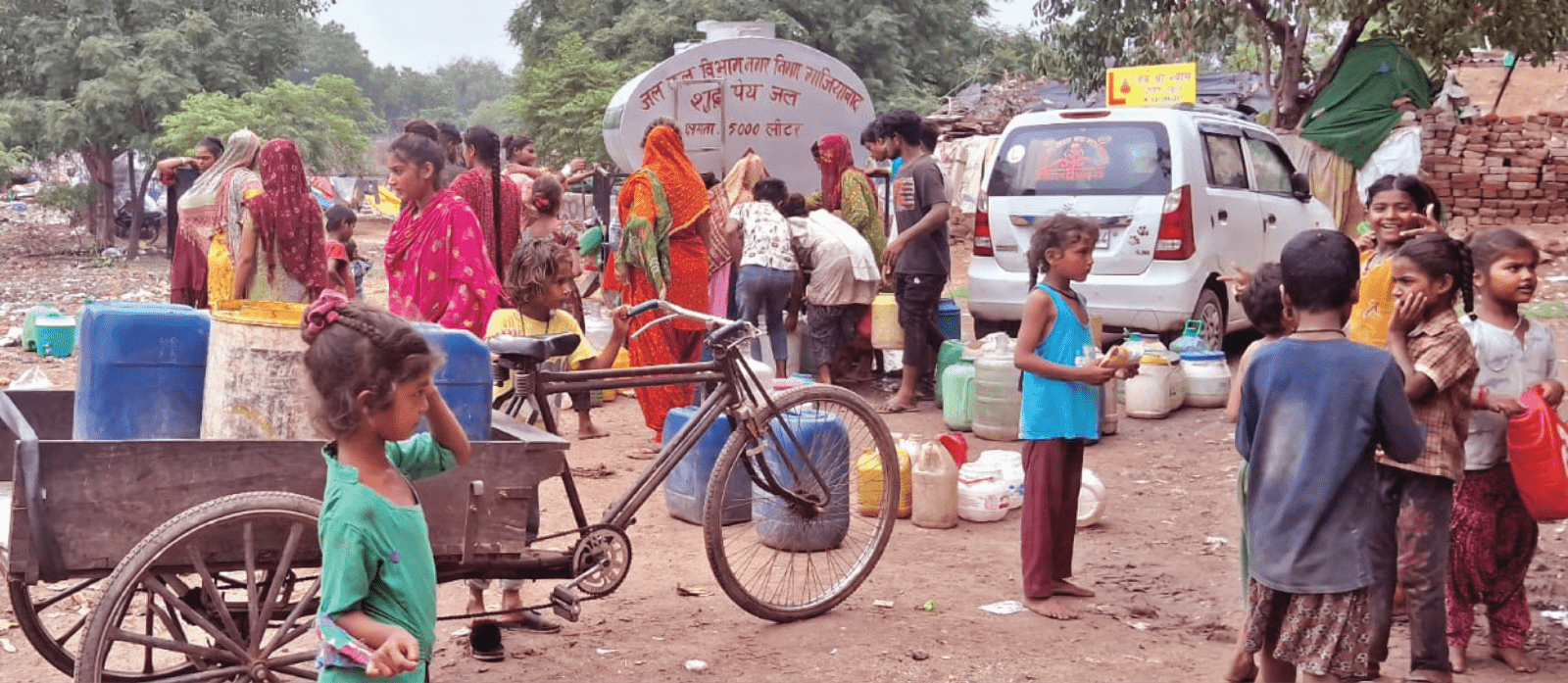Water-starved villages and even cities are a growing phenomenon in India. The sight of serpentine queues tailing a slew of water tankers becomes more and more common as the scorching summers approach. An urgent plea for saving and harvesting finds it way on peoples phone every year, but the crisis fails to abate.
Whether it’s a marginal cut in water supply for some or a trickle of murky tap water for others, majority of India’s urban dwellers are grappling a severe water crisis.
The plea of urban slum dwellers is further intensified with several days marked by parched throats and dry taps.
Chandmari, a low-income settlement in Ghaziabad, is one such community at the receiving end of water disparity. Comprising nearly 52 homes, the jhuggi is home to 177 children. On most days, however, women and children of this community find themselves walking miles armed with a variety of broad-faced, deep containers—paint buckets, petrol drums, and oil containers included—heading to fill water for the day.
The more harrowing reality, however, is the fact that majority of the times, they return with the containers dangling by their side—not a drop of water to account for the arduous journey they undertook.
The scarcity of potable water brought myriad challenges in the lives of its members. “I had to miss several days of school,” explains 13-year-old Pratibha. On days that I did go to school, my uniform would be terribly soiled and my hair unkempt. Teacher would ask aise kyu aayi ho? Paani nahi aata kya? And I would have no response.”
For adolescent girls like Pratibha, loss of access to clean water means a double whammy of missing school to help their mother fill water and do household chores and facing risk of infectious diseases due to poor personal and menstrual hygiene.
Pratibha’s mother, Nidhi, brings more issues to the fore with her vivid description of the string of challenges befalling her.
“Paani bharne jaate hai, gaali milti hai, maar padti hai”
As community members walk further away from the borders of their own community and within those of others, the dire scarcity causes strife between everyone. Physical and verbal abuse are rampant if people from different jhuggis attempt to source water from other jhuggis.
If mothers and children are still not able to bring back water in their assortment of big and small containers, they face another challenge glaring back at them—one where access to clean water becomes a paid luxury!
“Toilet jaane ke liye paise, nahane ke liye paise, kapde dhone ke liye paise. Hum to soch bhi nahi sakte aage kya hoga.”
Economic constraints engulf families when they’re forced to shell out money for what everyday essentials like sanitation, bathing and washing clothes.
Kajal, yet another mother to two chimes in with “bohot dur jaana padta hai paani lane ke liye.”
“Bacche bimar, hum bhi bimar. Paani ke bina paristhiti kharab hai.”
Hygiene and health both take a beating in the absence of potable water. Kajal’s cry for help highlights the undeniable fact that water crisis and health crisis coexist, exacerbating people’s difficulties.
Railway Children India’s intervention at this time of need, came as a huge relief to every member of the Chandmari community. As our teams approached the Ghaziabad Jal (Water) Board to arrange water tankers of potable water right in the community, mothers and children alike were overjoyed.
“RCI ne bohot sahayta ki” comes the reverberating response. Pani ka tanker aane se bohot accha lag raha hai.”
“Ab main majje se naha ke, clean hoke school jaati hoon” shares a jubilant Pratibha, while her mother, Nidhi, is happy with her meagre income now seeing some savings as well.
Children like Pratibha and mothers like Nidhi form 52 homes that have benefitted from the supply of potable water from tankers.





